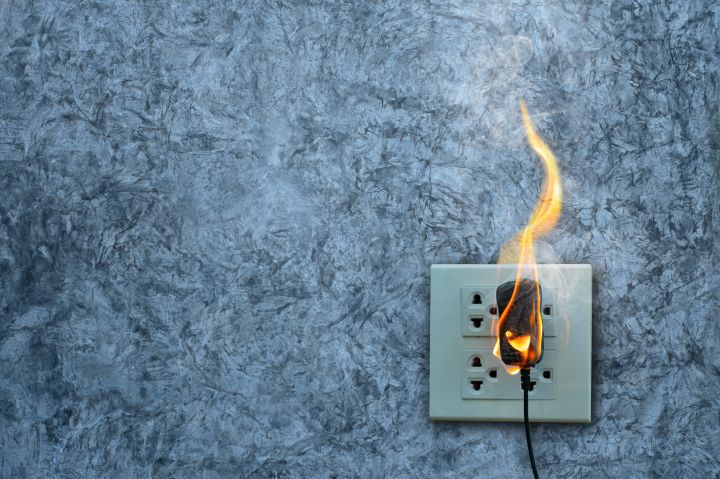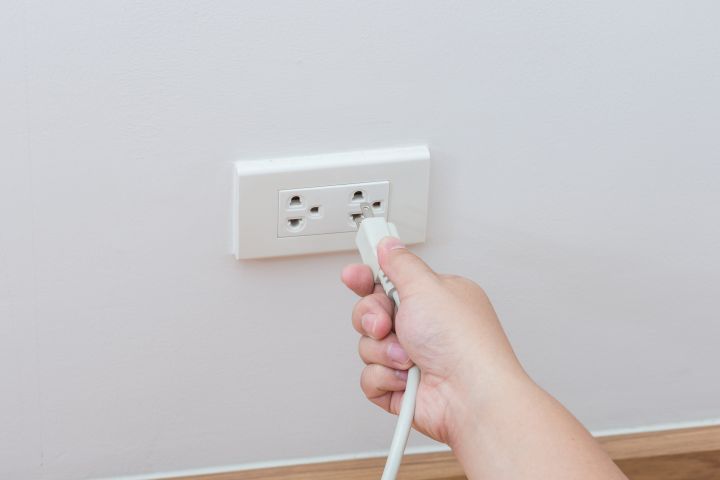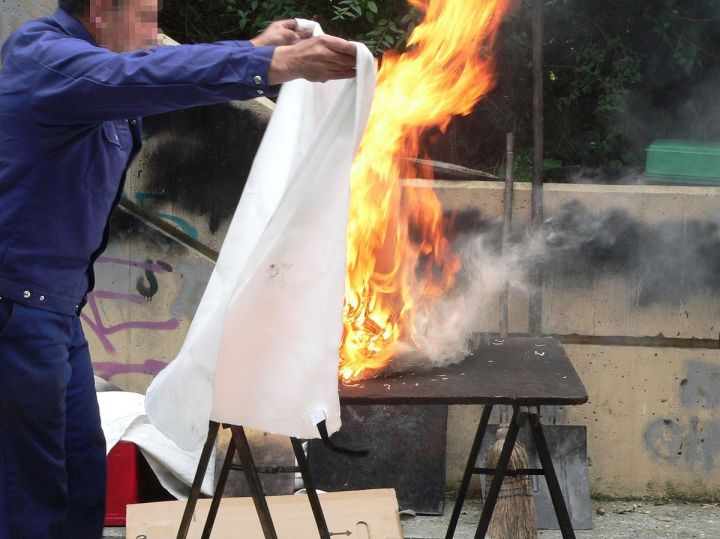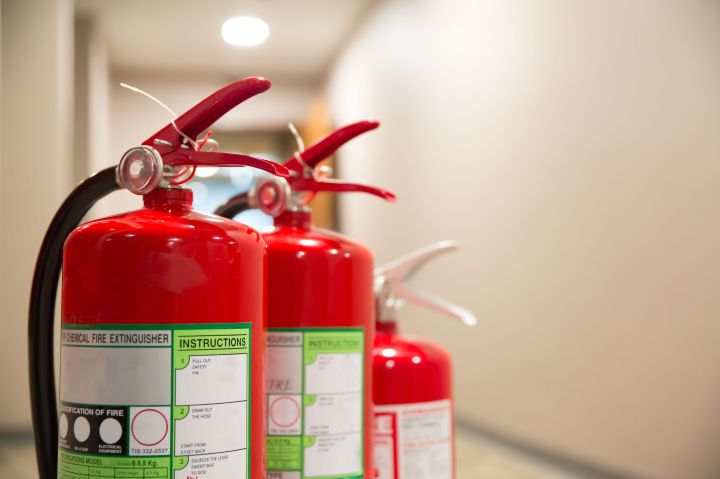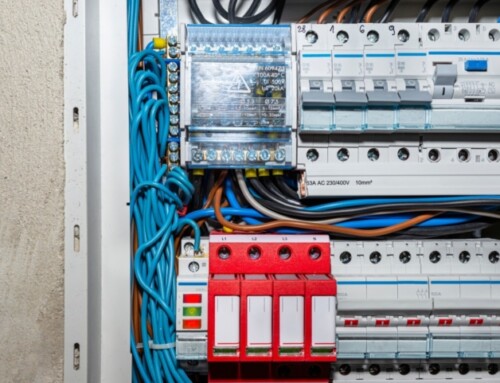Table of Contents
Most people spend a lot of time indoors, and some electronic gadget or appliance runs at all times. That means there may be a risk of an electrical emergency like an electrical fire. In this article, we will see the common causes of an electrical fire and how to put it out if you ever find yourself in an unfortunate situation of an electric fire.
Table of Content
- What Is an Electrical Fire?
- What Causes Electrical Fires?
- How To Put Out An Electrical Fire
- What To Do if it’s a Big Fire
What Is an Electrical Fire?
A failure in the electrical components or wiring can lead to electrical fires. Most electrical fires are caused by faulty outlets (receptacles), cables, circuit breakers, wires, or sockets that are not properly grounded.
What Causes Electrical Fires?
Bad wiring is a major cause of an electrical fire; however, there are several other common causes such as:
1. Faulty Outlets/Appliances
Old appliances and faulty outlets are among the most common causes of electrical fires. A worn-out or frayed cord sends heat into the combustible surfaces like a curtain, rug, or floor. So immediately replace appliances with a frayed cord.
Appliances have an extra prong to handle the additional electricity load that appliances draw sometimes. If the grounding plug is removed to use in a two-prong electrical outlet, an electrical fire is caused.
2. Overloading Extension Cords
Overloading a single extension cord by plugging multiple appliances creates excessive power load it is not meant to bear. When this overloading happens, your house is at the risk of catching an electric fire.
Never overload any extension cords. Contact your trusted electrician to install additional outlets if you need more of them.
3. Light Fixtures
Light fixtures or luminaires are electrical devices containing an electric lamp providing illumination. Be extremely careful with a light fixture in your home because if you install a bulb with a wattage too high for the light fixture, you are at risk of starting an electric fire.
We recommend checking the maximum suggested bulb wattage for the light fixture. Bulbs are never one-size-fits-all, so read the guidelines properly. Moreover, do not place a cloth or paper over the fixture. The material has a chance of getting heated and causing a fire.
4. Outdated Wiring
A 20-year old home will not have the wiring capacity to bear the load of increased electrical appliances like television, microwave, washing machines, air conditioners, etc. It may heat up quickly and catch fire.
Wiring problems are often overlooked, creating a major fire threat. Keep an eye out for the following signs that indicate outdated wiring:
-
-
- Shocks or sparks from appliances
- Overloaded circuit breaker
- Flickering lights
- Frequent power outages
- Burning smell
-
5. Portable Heaters
You have to be cautious of where you are placing a portable heater in your house. Keeping them next to combustible surfaces like curtains, rugs, beds, or couches will likely cause a fire. Moreover, never leave it on for long periods, especially when you are out or sleeping.
Using coil space heaters is a dangerous bet because the coil can get heated and ignite the next flammable surface. Use radiator-type portable heaters. They diffuse heat over the entire surface of the appliance and reduce the risk of igniting flammable objects – although you still need to keep them away from such objects.
6. Poor Maintenance
Keeping a check on the wiring and appliances in your house is necessary. If you see a frayed cord in your home, it needs to be replaced immediately. Call an electrician as such wires are exposed to your floor or wall can cause a spark.
Have monthly or yearly maintenance to keep your home safe from potential fire threats.
7. Old Appliances
Old appliances mean an increased chance of having frayed cords or faulty wiring. Moreover, the old insulation used in these appliances cannot be addressed properly with a simple repair. This increases the risk of catching fire.
Using old appliances also increases the risk of not being up to the standard when it comes to material quality, safety regulations, and wattage usage. Call your electrician to install appliance-designed outlets. Moreover, they can also install ground fault circuits that act as surge protectors and keep your house safe.
How To Put Out An Electrical Fire
1. Disconnect the Electricity Supply
Start at the source of the fire. Disconnect the electricity to the source such as an electrical appliance by unplugging it. This will significantly reduce the risk of a massive electrical fire by limiting the spread of the flames.
But, what if you cannot unplug the source? In that case, disconnect the electricity in your home. If there is a safe path to the electrical panel, go ahead and turn off the house’s power.
This is important because once you turn off the electricity, you won’t be at risk of electrocution.
2. Use Baking Soda
If any of your appliances or an overloaded cord starts a fire, use baking soda to put it off. Unplug the power source when the fire begins and toss some baking soda over the flames.
It helps in extinguishing the fire because baking soda contains a chemical compound sodium bicarbonate. This element is also present in Class C fire extinguishers.
Open a box of baking soda and keep it accessible. If an appliance like a toaster burst into flames, baking soda might just save you.
3. Never Use Water
A common impulse when the fire starts is to throw water on it. It can be safe when the source of fire is not electrical.
However, if it is electrical, turn off the power first. If you toss water when the power source is on, you may get electrocuted because water is a good conductor of electricity./
4. Cut the Oxygen Source
Oxygen whets fire, so one of the things you can do to stop an electrical fire is cut the source of oxygen.
You can do this by putting a heavy piece of clothing like a blanket. You can do this only if the fire is small. If the fire looks bad and the situation is unsafe, do not attempt to go near the fire to put it off.
5. Keep a Fire Extinguisher at Home
Keep a fire extinguisher that is appropriate for an electrical fire at home. Since electrical fires are class C fires, you need a fire extinguisher that is specifically made for that.
Residential fire extinguishers come labelled A, B, C, so make sure you check the type of the fire extinguisher before using it on an electrical fire. It should be Type C.
What To Do if it’s a Big Fire
-
- Unless the fire is really small and controllable, do not try to put out the electrical fire by yourself. When an electrical fire breaks out, get out of the house immediately. Make sure all your family members get outdoors. This will prevent loss of life or injury.
- Before exiting the house, make sure you close the door. This helps in containing the fire within the house rather than spreading outside as well.
- Once you and your family are at a safe distance, call 911 for help.
- Do not try to re-enter the house until the fire is completely extinguished by the firefighters.
In Conclusion
Aim to prevent electrical fires before they start by taking the necessary precautions. This could be bringing in a professional to inspect the house for potential electrical fire hazards. Install an AFCI for protection against electrical fires. Contact D&F Liquidators at 800-458-9600. We have a large inventory of reliable electrical supplies, circuit breakers, and safety switches from top brands at competitive rates.

D&F Liquidators has been serving the electrical construction materials needs for more than 30 years. It is an international clearinghouse, with 180,000 square facility located in Hayward, California. It keeps an extensive inventory of electrical connectors, conduit fitting, circuit breakers, junction boxes, wire cable, safety switches etc. It procures its electrical materials supplies from top-notch companies across the globe. The Company also keeps an extensive inventory of electrical explosion proof products and modern electrical lighting solutions. As it buys materials in bulk, D&F is in a unique position to offer a competitive pricing structure. Besides, it is able to meet the most discerning demands and ship material on the same day.

